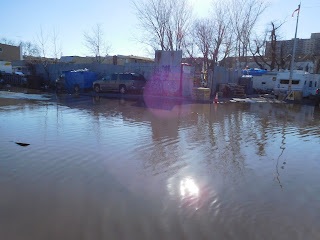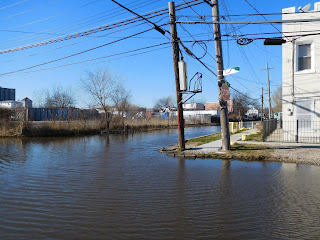Following the trail further, the hardy voyager wandered over 'hills and valleys, dales and fields' through a countryside where trout, mink, otter, and muskrat swam in the brooks and pools; brant, black duck, and yellow-leg splashed in the marshes and fox, rabbit, woodcock, and partridge found covert in the thicket.
The preceding passage isn't an account of my latest ride, though it could have described other rides I've taken.
I have, however, pedaled down the route followed by the author of that passage. My latest trek along that thoroughfare--one of many--took me past stores, restaurants, condo and co-op buildings and offices.
Also, I rode in the opposite direction from that of the scribe who penned that passage. Today, it's the only way one can travel for most of the roadway's length.
I am talking about one of the world's most famous urban byways: Fifth Avenue in Manhattan.
The section Arthur Bartlett Maurice described ran from about 21st to 28th Streets: about a mile and a half from the Avenue's southern terminus at Washington Square Park. He was also narrating a northward ("uptown" in New York parlance) trek; since 1966, all of the Avenue, save for a few blocks at its northern end, has allowed only southbound ("downtown") traffic.
 |
| Can you believe this was once a sight along Fifth Avenue? |
This month marks 200 years since the Avenue--which was mainly a dirt path--opened. It had been planned thirteen years earlier; its opening ushered an unprecedented building boom that, decades later, would lead to the stretch abutting Central Park to become "Millionaire's Row" and, later, "Museum Mile."
 |
| Or this? |
Mind you, I don't make a point of cycling Fifth Avenue. But there are times when it's an efficient and, given that it doesn't have a protected bike lane, relatively safe way to go. Because the stretch from 110th to 59th marks the Park boundary, most side-streets dead-end into it, so there are few intersections to navigate. Also, I find that its traffic patterns and flows are fairly predictable, even along the Midtown sector.
Oh, and I always make sure I wave to Patience and Fortitude when I pass the main New Yave to ork Public Library building. If they could talk....
(Thanks to Esther Crain, the author of one of my favorite blogs--Ephemeral New York--for the tribute to Fifth Avenue's bicentennial.)
.jpg)

.jpg)


































